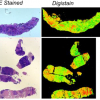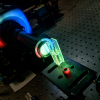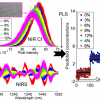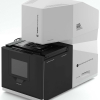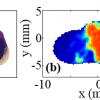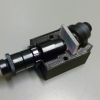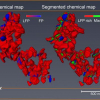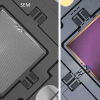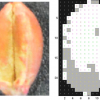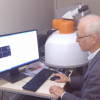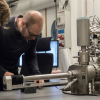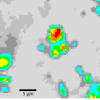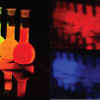Imaging News
The winner of the 2018 Tomas Hirschfeld Award is Professor Christian Huck.
Applications for this prestigious award are invited by 30 November 2018.
Rice University scientists are using snapshot hyperspectral imaging to view a field of plasmonic nanoparticles simultaneously to learn how their differences change their reactivity.
A new mid-infrared imaging technology can be used to grade cancer tumours, eradicating human subjectivity and ensuring patients get the right treatment.
New business unit dedicated to hyperspectral imaging solutions.
Researchers from Nanyang Technological University, Singapore, have developed a new camera technology that could be used to produce extremely compact multispectral cameras.
The final step in pharmaceutical production is often tableting. Near infrared chemical imaging can be used to monitor inconsistencies in the powder that will become the tablet, which have been introduced by mechanical processes in the tableting equipment and can lead to out of specification tablets.
Bruker has acquired IRM2, a developer of high-speed infrared (IR) imaging microscopes based on quantum cascade laser (QCL) technology.
THz spectroscopy and imaging offer improved imaging of breast cancer tumours.
Researchers have used 3D printing to make the holder for the optics used to create an inexpensive and small hyperspectral imager.
A coherent, nanoscale beam of X-rays from a synchrotron source have been used to map chemical reactions happening inside lithium-ion batteries in three dimensions at the nanoscale.
Researchers are using hyperspectral sensors to detect fluctuations in photosynthesis over the growing season measured with sun-induced fluorescence.
Combining metasurface lenses with MEMS technology could add high-speed scanning and enhance focusing capability of optical systems.
NIR hyperspectral imaging can be used to control the addition of seed treatment products to monitor dosage levels and coverage.
Researchers at the National Research Nuclear University MEPhI have shown the importance of using multiple excitation wavelengths when studying complex oxides with Raman spectroscopy.
The use of time-of-flight secondary ion mass spectrometry imaging to examine the skin can reduce the number of animal experiments while providing new opportunities to develop pharmaceuticals and cosmetics.
AGLAÉ is the only particle accelerator in the world dedicated to studying heritage objects. Now improvements in automation and detector sensitivity have been introduced.
Raman imaging can now produce images of brain tissue that is affected by Alzheimer’s disease. The images include the surrounding areas, which may already be showing changes.
A new colour image sensor with red-sensitive, blue-sensitive and green-sensitive colour sensors stacked on top of each other instead of being lined up in a mosaic pattern could allow image sensors with unprecedented resolution and sensitivity to light to be created.



